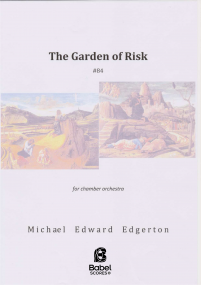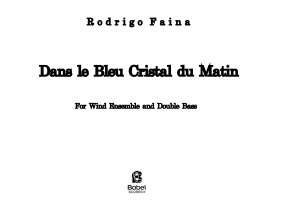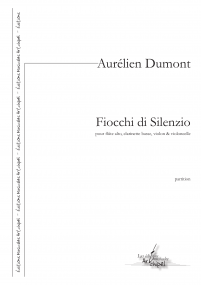Recherche avancée
Portrait Labyrinths
13,39 €
Version papier (+14,80 € impression et livraison ). Colissimo7-14 days aprox.
Version numérique (+0,00 €) à télécharger
Chez BabelScores, quand vous achetez une partition, vous pouvez ensuite contacter directement le compositeur ici même !
Caractéristiques
Region
Europe
Estimated Duration
6 - 10min
Date
2007
ISMN : 979-0-2325-0950-1
In Stock
Notes sur cette pièce
The piece is related to “A Portrait of the Artist as a Young Man” by James Joyce. The fundamental musical idea that rules the piece is a symmetric sequence of seven sounds. Beyond the structural symmetries that establish the musical skeleton of every movement in the piece, the direction of the general discourse in each of the parts is intimately connected to the narrative technique of Joyce’s novel: stream of conscious. The development of the main character’s mind from childhood to adulthood throughout a coherent and logical progress of thinking is musically mirrored in my piece.
Each of the three sections of the composition follows a straight line in the growth of musical consciousness, and at the same time, contributes to the broader, comprehensive shape that involves all the movements in the work. The material form moves from simplistic and fragmentary musical cells up to reach a complex and articulated structure.
In the first movement there are five strata: woodwinds, brass, piano, string quartet, and bass. Each group works as an entity separately from the others and has its own lively inner life. This separation gradually fades away and the five layers join a single main flow of sound.
In the second movement there are two levels: an energetic and active one, and a static and mystic one. The first is assigned to the winds, marimba, and piano; the second to the strings. The direction of the musical ideas within each of the levels is consistently articulated in one major gesture. Again, both planes are in opposition at the beginning, and work slowly to create a relationship that is finally clearly stated at the end.
In the third movement all the musical elements are together since the first measure setting a unique discourse, a single coherent and direct thought that is developed up to the closing section.
Ajouter à une playlist
- Identifiez-vous pour créer une liste
The piece is related to “A Portrait of the Artist as a Young Man” by James Joyce. The fundamental musical idea that rules the piece is a symmetric sequence of seven sounds. Beyond the structural symmetries that establish the musical skeleton of every movement in the piece, the direction of the general discourse in each of the parts is intimately connected to the narrative technique of Joyce’s novel: stream of conscious. The development of the main character’s mind from childhood to adulthood throughout a coherent and logical progress of thinking is musically mirrored in my piece.
Each of the three sections of the composition follows a straight line in the growth of musical consciousness, and at the same time, contributes to the broader, comprehensive shape that involves all the movements in the work. The material form moves from simplistic and fragmentary musical cells up to reach a complex and articulated structure.
In the first movement there are five strata: woodwinds, brass, piano, string quartet, and bass. Each group works as an entity separately from the others and has its own lively inner life. This separation gradually fades away and the five layers join a single main flow of sound.
In the second movement there are two levels: an energetic and active one, and a static and mystic one. The first is assigned to the winds, marimba, and piano; the second to the strings. The direction of the musical ideas within each of the levels is consistently articulated in one major gesture. Again, both planes are in opposition at the beginning, and work slowly to create a relationship that is finally clearly stated at the end.
In the third movement all the musical elements are together since the first measure setting a unique discourse, a single coherent and direct thought that is developed up to the closing section.
Instrumentation
Flute|Clarinet|Bassoon|Horn (French Horn)|Trombone|Trumpet in C|Marimba|Piano|Violin (2)|Viola|Cello|Double bass|
Score Details
Format - A4 / US Letter
Pages - 40
Pages - 40







